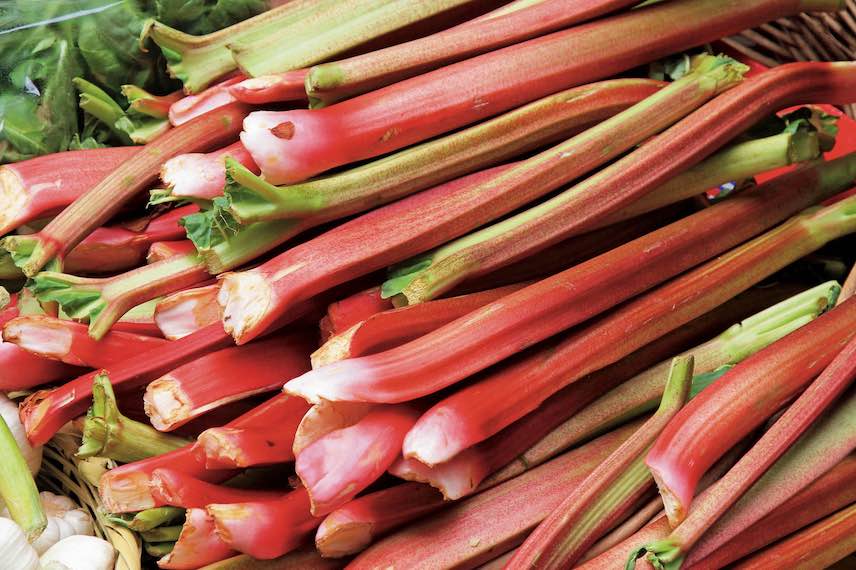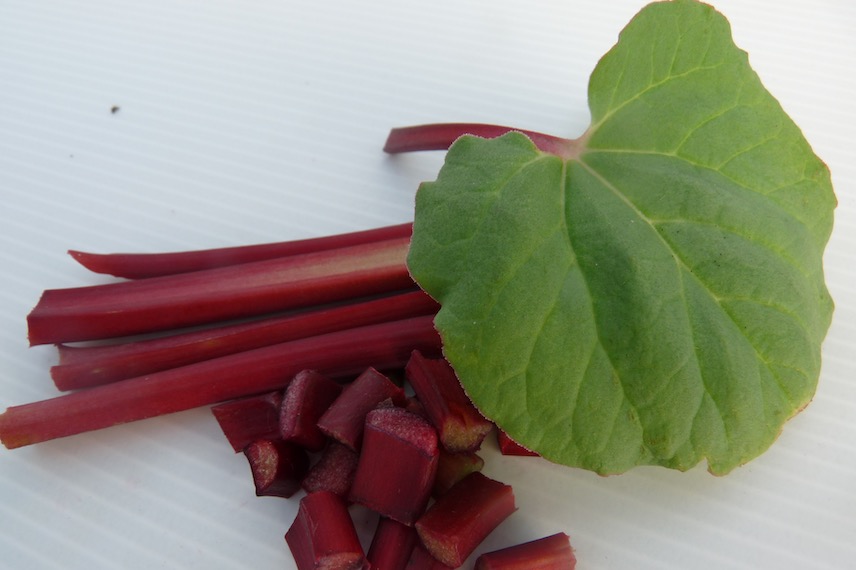Rhubarb isn't just a plant grown for cooking: it's also a medicinal herb known since antiquity, not to mention that it can perfectly be used to make your own plant spray.
Completely natural and truly economical to use, rhubarb spray is mainly used to repel pests from your plants, particularly aphids. You don't need to be an expert gardener to give it a try, as its preparation remains simple and accessible to all: you'll find all the information you need in this article.
How to make rhubarb spray?
Required materials
- Naturally, you'll need chopped rhubarb leaves to prepare your spray;
- Water, ideally untreated: you can safely use rainwater or, failing that, mineral water;
- A glass or plastic container with a capacity of about 10 litres. Avoid using metal to prevent any oxidation;
- A lid or large cloth;
- A stick;
- A fine sieve;
- Several bottles or containers for storage.

Making rhubarb spray
- To make about 10 litres of rhubarb spray, you'll need to gather 1.5 kilograms of leaves. Place them chopped in a pot or bucket, diluted in your water.
- Let it steep for at least 72 hours in a plastic container.
- To speed up the process, use a perforated lid that allows some air to filter through (and prevents dirt from settling) or simply a large cloth placed over the bucket.

- After the three days of steeping, strain the spray through your sieve and keep only the liquid.
- Pour it into a sprayer; you can use the rhubarb spray undiluted. In other cases, a dilution of one litre of spray in 5 litres of water is sufficient.
Note that there's a quicker method to make rhubarb spray. We recommend the first method, but if you're in a hurry, you can steep your leaves in boiling water and let it cool for just 24 hours before moving on to the straining step.
Harvesting and storing rhubarb spray
The rhubarb leaves you'll use to make your spray can be harvested at the same time as the stems, in spring. As a reminder, to give yourself the best chance of having good rhubarb in your garden, you should plant it in well-drained, cool soil rich in humus.
Provided you store your rhubarb spray in suitable containers, you can easily keep it for several weeks or even months. For this purpose, always choose opaque plastic containers, kept away from sunlight, heat, and extreme temperatures (your rhubarb spray should also not be exposed to winter frost).
How to use rhubarb spray?
The benefits of rhubarb spray against pests
Rhubarb spray is effective against all the insects we fear in the garden, which can cause varying degrees of damage to plants. You can use it both preventively and curatively against black aphids, leek moth, carrot fly, and even slugs.
Warning: depending on its intended use, rhubarb spray isn't always applied in the same way. In some cases, it's recommended to apply it undiluted, while in others, it's better to mix it with water, following precise measurements.

Always ensure you use rhubarb spray on plants that haven't recently been treated with chemicals. Where possible, we even recommend replacing all such solutions with natural alternatives, as there are many! For example, a rhubarb spray treatment can, in some cases, be complemented by using nettle spray. This combination helps strengthen the defences of specimens weakened by various pests.
Applying the spray undiluted or diluted
Naturally containing oxalic acid, rhubarb spray is both a repellent and an insecticide. Spray it undiluted if you want to combat aphids, carrot fly, and leek moth. You can apply it directly to affected areas, but also to others as a preventive measure. Remember to repeat the operation every two weeks until the pests are completely eliminated. You should also reapply after rainfall.
If you'd rather fight slugs, you don't need undiluted rhubarb spray. Here, simply dilute one part of undiluted spray in 5 parts of water. However, you must water the plants after each rain to maintain protection.
Precautions for the gardener
Always use your rhubarb spray with gloves. Although this repellent is 100% natural and free from added chemicals, it contains a substance that's toxic in high doses: oxalic acid.
Many other natural ingredients can help you make your own insect repellent spray: tansy infusion, lavender and nettle in long maceration, wormwood and chamomile in decoction, among others.
Keep in mind that rhubarb is a seasonal plant available between April and July. If you want to use its spray throughout the year, you'll need to prepare as much as possible in spring, knowing it can be stored for several months in suitable containers.



































Comments